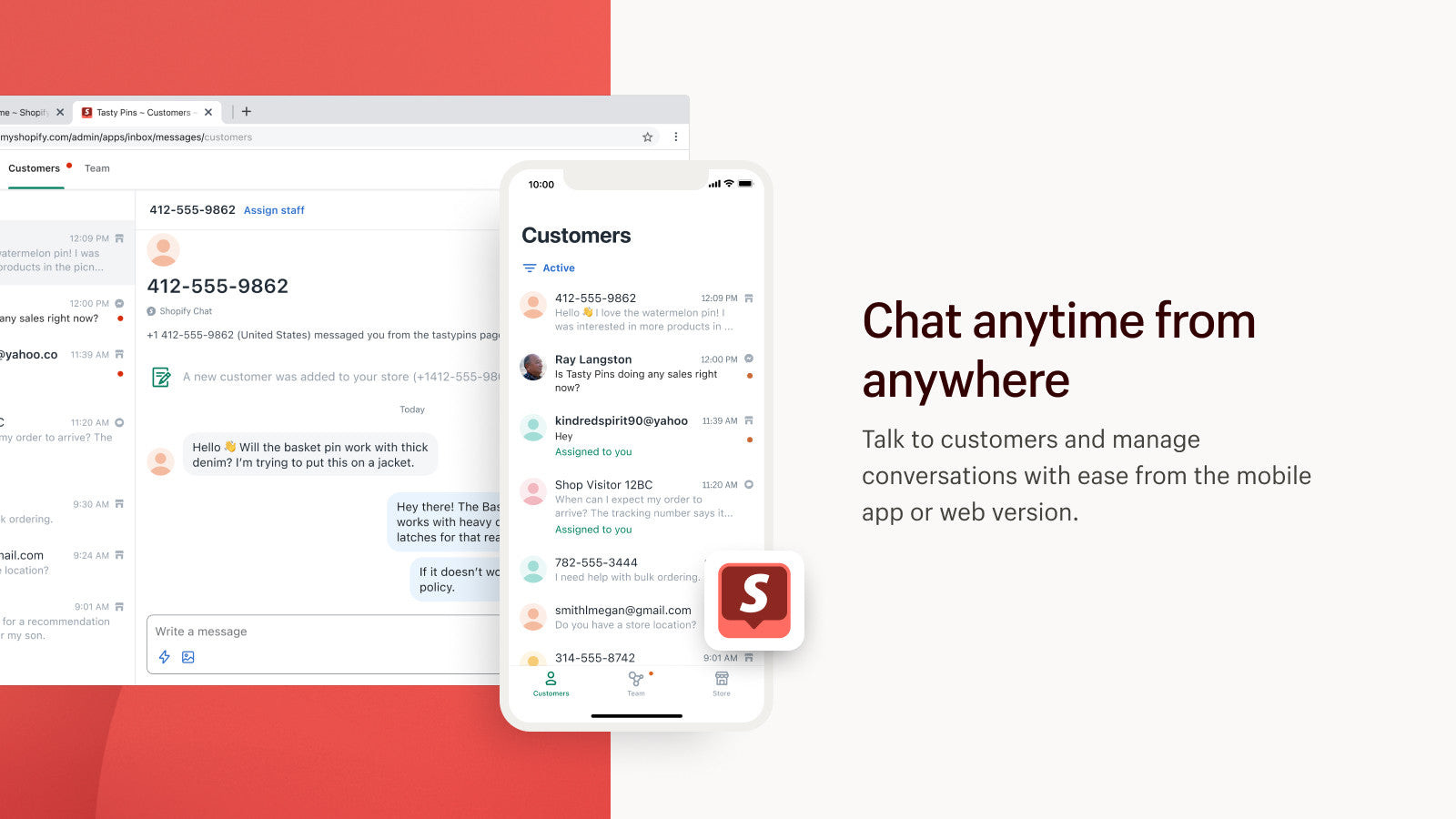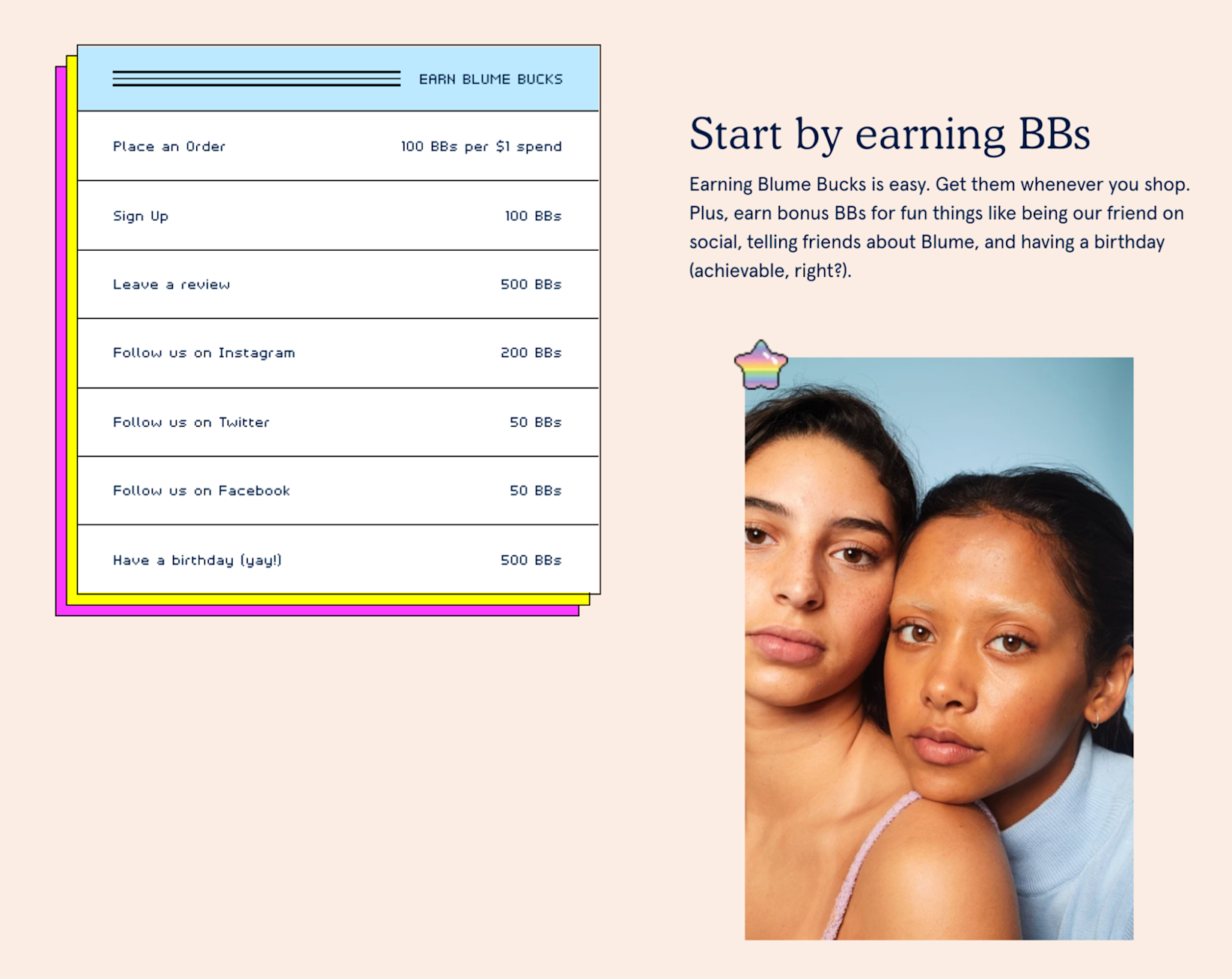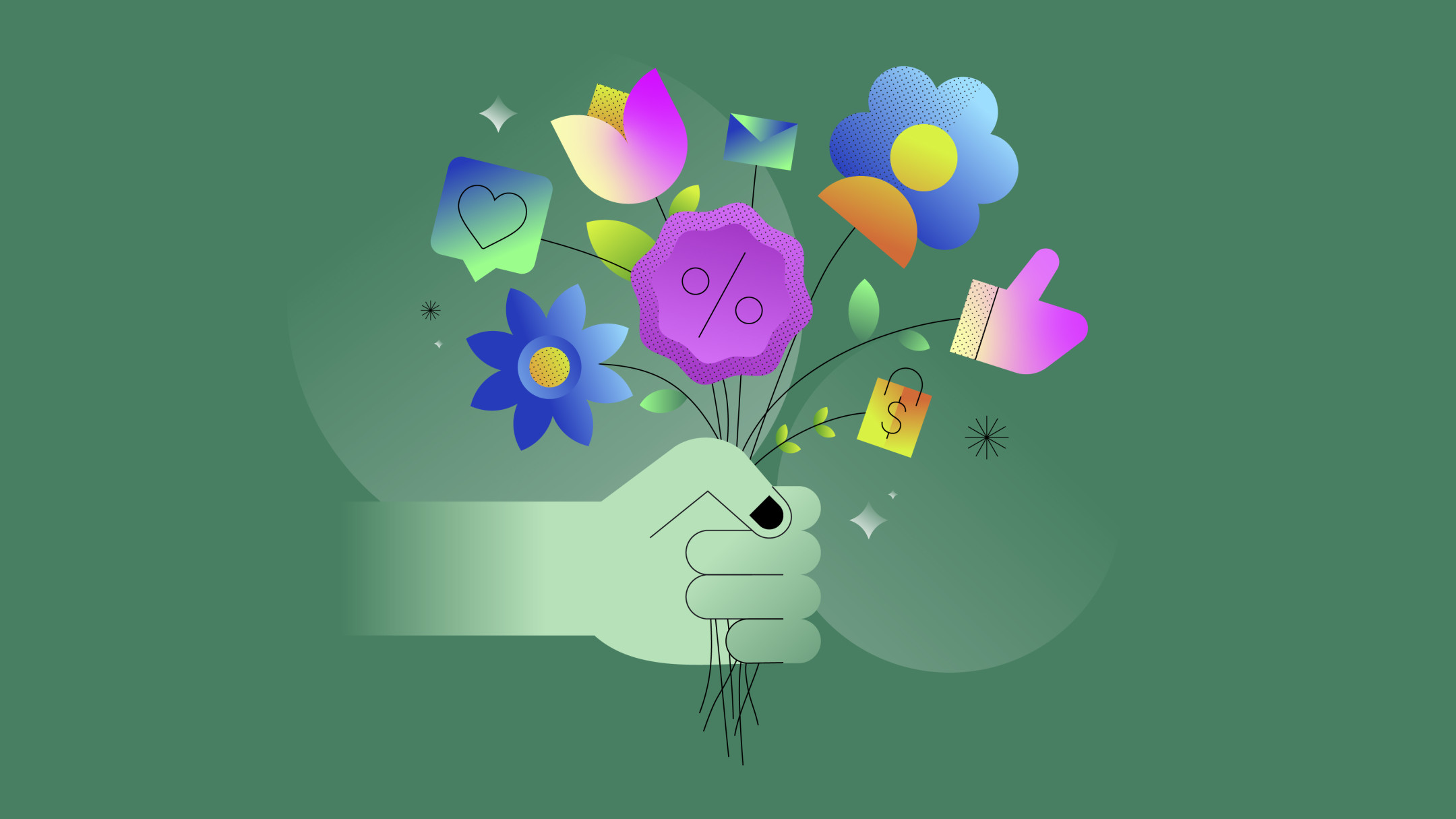Prioritizing existing customers is a smart move, especially during a potential economic downturn. When given an excellent experience, they buy more from you and recommend their friends do the same.
That’s why Antavo found that 67.7% of companies plan to increase their investments in customer retention throughout 2023.
Ahead, you’ll learn proven tactics to increase customer lifetime value and make more sales from your existing customers.
What is customer lifetime value (CLV)?
CLV tells you how much you’ll make over your entire relationship with a customer. It’s one of the most important metrics of a retail and ecommerce business.
Imagine you own a fashion brand. A customer makes their first purchase of $200 from your online store. If they only make this single purchase, their customer value is relatively low.
However, say this same customer likes your product and buys an additional $200 worth of merchandise every three months for the next five years. This means the customer’s lifetime value is $200 x 4 (times per year) x 5 (years) = $4,000—far more valuable than a one-off purchase.
Why is CLV important to your business growth?
CLV measures how much economic value a customer brings over their entire relationship with the business. You can use it to guide marketing strategies, budget allocations, and customer service policies.
Some benefits include:
- Predictability. CLV gives businesses a long-term view of customer relations, which can be useful in predicting future revenue. That’s why in response to the recent economic circumstances, 67% of brands shifted their focus from acquisition to retention, Twilio reports.
- Customer retention and profitability. Repeat customers buy more from a company over time. Long-term customers also refer others to your business, which adds even more value to the relationship.
- Smarter resource allocation. Knowing CLV helps you find more profitable customer segments. This helps you create more targeted marketing campaigns and attract higher value customers.
- Better customer experience. When a company focuses on CLV, it tends to provide better customer service to keep customers. And when customers like you understand them, 82.5% are inclined to buy from you again.
In light of a looming recession, customer retention should be your number one priority. Let’s look at where you should invest to increase customer satisfaction and CLV.
How to increase customer lifetime value
- Calculate customer acquisition costs
- Calculate customer lifetime value
- Listen to customer feedback
- Provide exceptional customer service and support
- Personalize marketing efforts based on customer data
- Implement loyalty programs to incentivize repeat purchases
- Upsell and cross-sell relevant products or services
- Build strong customer relationships
- Segment your customer lifetime values
- Focus on customer retention and reducing churn
1. Calculate customer acquisition cost
Customer acquisition cost (CAC) is a key business metric that represents the cost of acquiring a new customer. It includes all marketing and sales costs spent to attract and convert a lead into a customer.
You can calculate CAC by dividing the total costs associated with acquisition by the total number of new customers, within a specific time period.
Here’s the formula:
CAC = (MC + SC + W + OS) / CA
Where:
- MC is the marketing costs
- SC is the sales costs
- W is wages for marketing and sales teams
- OS is the overhead costs for marketing and sales
- CA is the number of new customers acquired
Monitor this metric regularly to understand the effectiveness of your marketing efforts and understand your return on investment. Lowering your CAC can increase CLV simultaneously.
2. Calculate customer lifetime value (CLV)
Customer lifetime value can be calculated using the following formula:
CLV = (Average Purchase Value x Purchase Frequency) x Average Customer Lifespan
To break it down:
- Average Purchase Value = Total Revenue / Number of Purchases
- Purchase Frequency = Number of Purchases / Number of Unique Customers
- Customer Value = Average Purchase Value x Purchase Frequency
- Average Customer Lifespan = Average number of years a customer continues purchasing from your business
3. Listen to customer feedback
Customer feedback gives you insight into what people think about your brand and its products. Listening to feedback helps you know your customers at their core, which the majority of them feel influences purchasing decisions.
Use a Shopify app like POWR or Grapevine Surveys to create a feedback system on your website. Customers can easily share their experiences and recommendations, and you can get access to a goldmine for improving your products and CLV.
4. Provide exceptional customer service and support
Customer service helps customers out when something goes wrong. Support is an area of business normally associated with slow response times and inefficiency. Today, customer service needs to be amazing if you want to retain customers and encourage sales.
In fact, 36% of respondents to a US survey said great customer service is a motivation to recommend a brand online.
Research what channels your customers prefer for support. Do they prefer self-service? Social media? Or website live chat? Once you know which channels to focus on, you can invest in them and provide better support.
Shopify Inbox is a free Shopify app that helps retailers provide omnichannel support for customers. You can talk with and sell over online store chat, social media, and email, all from the app. You can also send products, discounts, and new orders from your Shopify store directly inside chats with just a few taps, to turn more conversations into checkouts.

Shopify Inbox also connects with popular message platforms like Facebook Messenger so customers can contact you directly from your Facebook page, Facebook shop, and Messenger.
5. Personalize marketing efforts based on customer data
Understanding individual preferences leads to personalized experiences that drive repeat sales. It requires you to know how a customer likes to shop, what products they’re interested in, and types of communications they prefer.
But, what do these personalized experiences look like? A recent Yotpo survey found what personalization actually means to customers. The top 5 were:
- The brand recommends products based on my previous purchases (53.9%)
- The brand emails me when products I’m interested in are back in stock (45.2%)
- The brand uses my name in emails and texts (37.7%)
- The brand knows the sizes, dietary restrictions, skin type, etc. (36.7%)
- The brand knows which loyalty VIP tier I’m in and treats me accordingly (32.8%)
Understand your customers across all touchpoints. Avoid generic approaches to your marketing and communication through the customer journey. Try an app like Rebuy Personalization Engine or Zepto Product Personalizer to tap into customer information and deliver the personalization they want.
6. Implement loyalty programs to incentivize repeat purchases
Customer loyalty programs are good for everyone.
One report found that 80% of companies reported a positive ROI with an average of 4.9 times more revenue than expenses. Plus, 89% of customers trust loyalty programs to help them overcome the inflation crisis and potential recession.
Use a loyalty program to show your most dedicated customers that you care by offering them gifts and rewards for repeat purchases. You can offer different perks to encourage upsells and cross-sells like:
- Points
- Gift cards
- Discounts
- Cash back
- Free swag
For example, body care retailer Blume used a point system called Blume Bucks (BBs) for its loyalty program, Blumetopia. Customers earn BBs by completing tasks like following the brand on Instagram, buying products, leaving a review, or having a birthday.

It’s free to join, and customers can redeem BBs for free products, merch, and other gifts from Blume.
Starting your loyalty program is easy. With an app like Smile, you can set up a program that gives your customers access to exclusive perks and discounts, referral and VIP programs, and other fun ways to engage with your brand when they log in to your store.
Learn more by reading Keep Them Coming Back: 7 Innovative Customer Loyalty Programs (And How to Start Yours).
7. Upsell and cross-sell relevant products or services
Upselling is a tactic to persuade customers to buy a premium or upgraded version of a purchased item or other items. The items are often more expensive, with the goal of making a larger sale. It’s used to sell to customers who’ve already made a purchase rather than selling to a new one.
Cross-selling is often confused with upselling. The key difference is that cross-selling involves a recommendation that complements the original product, while upselling is an upgraded version. Think of cross-selling as a server asking, “Would you like fries with that?” and upselling as, “Would you like Hendrick’s instead of well gin?”
Use an app like ReConvert to add upsell and cross-selling tactics to your store. It provides post-purchase funnels and one-click upsell pages you can design in minutes. You can also use it to display product recommendations, offer coupon codes, collect birthdays, and so much more.
8. Build strong customer relationships
Customer expectations are increasing. In 2022, Intercom found that 83% of support teams have seen this increase, and that they are doing more with less.
Some easy ways to build strong customer relationships are:
- Sending personalized messages on special occasions, like a birthday
- Providing omnichannel customer support
- Acting on customer feedback
- Creating a community on social media or hosting events
Personalization is the key competitive differentiator when building relationships and winning customers. Support teams that focused on personalized support reported two times increases in customer retention, as per the Intercom report.
9. Segment your customer lifetime values
Break customer groups into different groups based on profitability. For example, after tracking CLV over a period time, you find three segments:
- High CLV: Loyal customers who frequently make large purchases and recommend your products to others.
- Medium CLV: Customers who make regular, but smaller purchases.
- Low CLV: Customers who make occasional small purchases and have a low repeat purchase rate.
Segmenting your CLV into these groups helps you focus your marketing efforts. For example, you can allocate more ad spend to similar customers in your high CLV segment and reserve less expensive channels to acquire mid-lower CLV customers.
10. Focus on customer retention and reducing churn
Customer retention refers to the actions you take to reduce customer churn. Churn rate, or customer attrition, is how many of your customers cancel or don’t renew during a short period of time. Churn rates should be low, since high churn rates could indicate dissatisfaction.
Consider a subscription-based ecommerce business. Over time, the business notices that some customers stop their subscriptions after the first month. There is a high churn rate here.
Data and feedback may reveal that customers churn because they find the product too expensive or that it doesn’t meet their needs. As a result, the company can take specific measures to improve the product, offer customized solutions, or adjust pricing to improve customer retention.
Increasing CLV FAQ
What are the methods for increasing customer value?
Some methods for increasing customer value include providing excellent customer service, using data to customize marketing campaigns, starting a loyalty program, and regularly interacting with customers and building relationships.
How would you optimize customer lifetime value for your business idea?
To start, identify your target customer base and their needs. Then, design products or services to solve those needs. Put tools in place early on for measuring customer lifetime value and keeping customers engaged and happy to encourage repeat business.
How do you increase customer lifetime value in B2B?
To increase customer lifetime value in B2B, carry out strategies like personalizing service offerings based on specific business problems, offering tiered pricing or volume discounts, and building strong relationships. It’s also important to deliver consistent value and quality in your products or services.
Why is it important to increase customer lifetime value?
Increasing customer lifetime value is important because it is cheaper to retain existing customers than to acquire new ones. Your customer’s lifetime value increases when they’re loyal, regularly engage with you, and buy your stuff often. Loyalty not only increases profitability, it also builds a strong reputation and word-of-mouth referrals.
Read More
- How to Personalize for Unknown Black Friday Cyber Monday Mobile Visitors
- How to Design Customer Surveys That Lead to Actionable Insights
- Shopify Flow Templates you can use During COVID-19
- How to Block the Ad Blockers & Whether You Should
- How to Monetize Dormant Customers With a Successful Winback Campaign
- Customer Retention: How to Turn New Shoppers into Repeat Customers
- Overhauling Your Customer Acquisition Model: How to Spend Your Budget Where It Really Counts
- How to Drive High-Intent Ecommerce Visitors Toward Buying and Eliminate Anything That Stands in the Way






